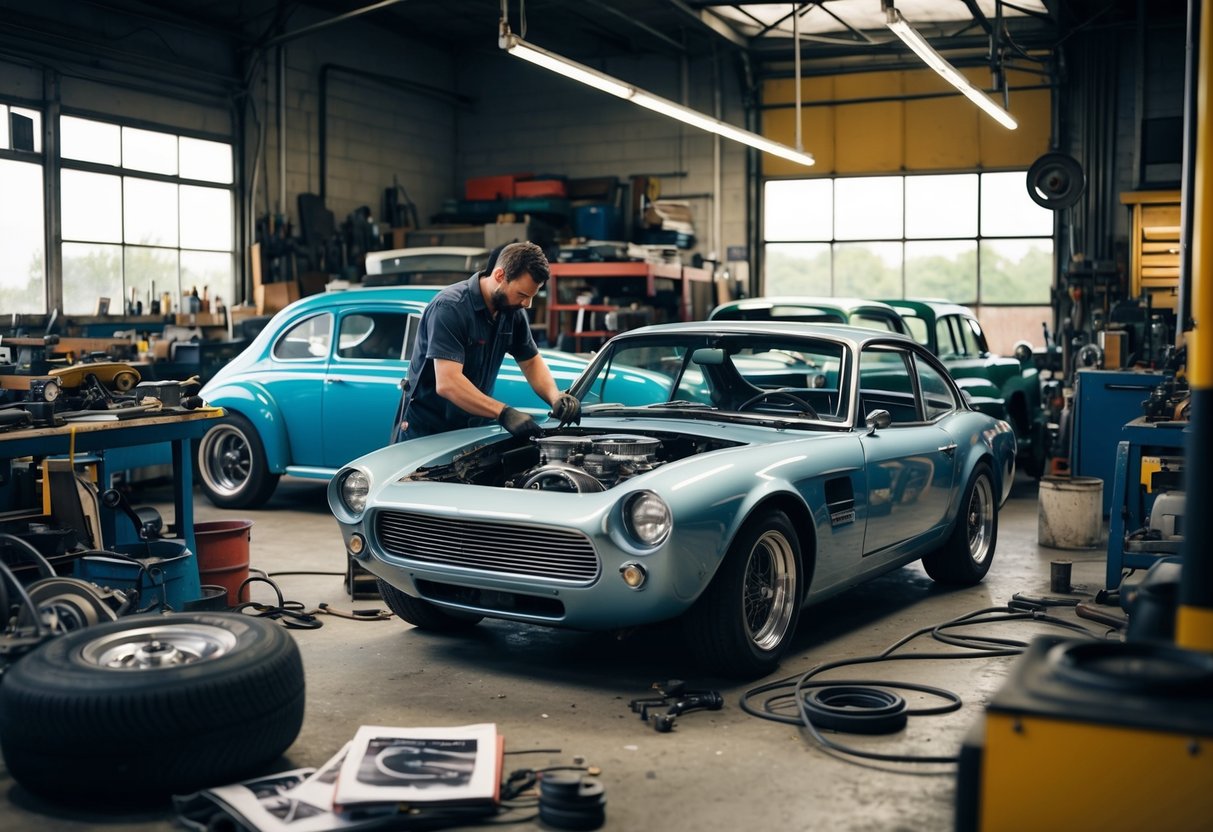
The Final Touches
Final touches in car restoration elevate vintage vehicles, emphasizing craftsmanship and precision. Attention to detailing and achieving a period-correct appearance set a restoration project apart. Each of these aspects contributes to a vehicle’s authenticity and market appeal.
Detailing for Show-Quality Presentation
Attention to detail is crucial for achieving a professional finish on any restoration project. This often starts with paint correction, where imperfections in the paint are meticulously polished to achieve a glass-like finish. Interior cleaning also plays a significant role, with seats, dashboards, and carpeting needing careful restoration to bring back their original glory. Elements such as chrome polishing can add significant visual impact. Each detail contributes to a cohesive and pristine appearance that stands out, whether in a showroom or at a classic car event. Consistent maintenance of all surfaces ensures longevity and enhances the vehicle’s resale value.
Achieving Period-Correct Appearance
Achieving a period-correct appearance involves understanding the historical context of the vehicle being restored. Original parts are crucial; sourcing authentic parts or using high-quality reproductions is essential. Attention to details like paint color and texture, trim, and even emblem positioning is necessary. Upholstery should match the original specifications, reflecting the car’s era. Tires and wheels also need to reflect period-correct designs to enhance authenticity. Such painstaking efforts result in a visually and functionally accurate vehicle that not only looks right but feels connected to its original time of manufacture. For many enthusiasts, this commitment to originality and historical accuracy enhances the entire restoration experience.
Maintenance and Upkeep
Consistent care is vital for maintaining classic cars. It includes regular inspections, timely repairs, and preventative measures to ensure optimal performance. Establishing a schedule and preparing for unexpected repairs are key elements.
Establishing a Routine Maintenance Schedule
Creating a routine maintenance schedule is essential for any owner of a restored classic car. Adhering to a regular timeline helps identify and address potential issues before they become major problems. Oil changes, tire checks, and fluid replacements should be carried out at specific intervals based on driving habits and manufacturer recommendations.
Routine inspections of the car’s engine, brakes, and suspension are necessary. This ensures the longevity of the vehicle and maintains its original performance standards. Cleaning and waxing are also crucial to protect the car’s exterior and preserve its classic appeal.
Addressing Future Repairs and Care
Consideration of future repairs is indispensable in the ongoing care of classic cars. Frequent checks on the availability of original parts can save time and stress when replacements are needed. Networking with other classic car enthusiasts can help locate hard-to-find components.
Owners should set aside a budget for eventual repairs and restorations. Staying informed about the latest restoration techniques and tools can greatly aid in maintaining the car’s condition. A trusted mechanic with experience in classic car restoration can provide invaluable advice and perform necessary repairs skillfully.
Engaging with the Classic Car Community
Connecting with fellow enthusiasts enhances the restoration journey, offering insights into classic car clubs and the sharing of personal experiences. Membership includes access to valuable resources and camaraderie, while storytelling sustains enthusiasm and preserves automotive history.
Joining Classic Car Clubs and Events
Joining classic car clubs is highly beneficial for enthusiasts. Clubs provide access to knowledgeable individuals experienced in various restoration techniques. They often organize events such as rallies, exhibitions, and meet-ups. These gatherings serve as excellent opportunities to view a diverse array of vehicles and interact with other enthusiasts.
Participation in such events helps deepen understanding of automotive history. Engagement extends beyond just vehicle appreciation to sharing restoration techniques and gaining inspiration. Many clubs also offer forums and newsletters. These platforms allow members to stay informed about news and trends in classic car restoration.
Sharing Your Restoration Journey
Sharing the restoration journey with others builds a sense of community and encouragement. Social media platforms and forums make it easier than ever to document and share this process. By posting progress updates, enthusiasts can receive valuable feedback and advice from the community.
Personal stories and restoration challenges add depth to the collective knowledge of automotive history. They also inspire newcomers to embark on their own projects. Moreover, this exchange of experiences frequently leads to friendships among those passionate about classic cars. Enthusiasts find camaraderie in their shared love of restoration, establishing connections that enhance the overall experience.



